| Recent Featured Videos and Articles | Eastern “Orthodoxy” Refuted | How To Avoid Sin | The Antichrist Identified! | What Fake Christians Get Wrong About Ephesians | Why So Many Can't Believe | “Magicians” Prove A Spiritual World Exists | Amazing Evidence For God | News Links |
| Vatican II “Catholic” Church Exposed | Steps To Convert | Outside The Church There Is No Salvation | E-Exchanges | The Holy Rosary | Padre Pio | Traditional Catholic Issues And Groups | Help Save Souls: Donate |  |

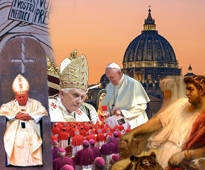
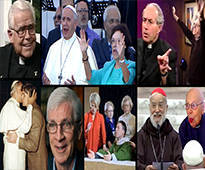
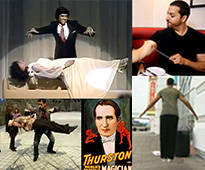
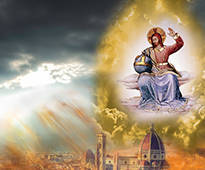

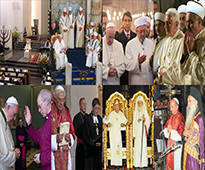


 " />
" />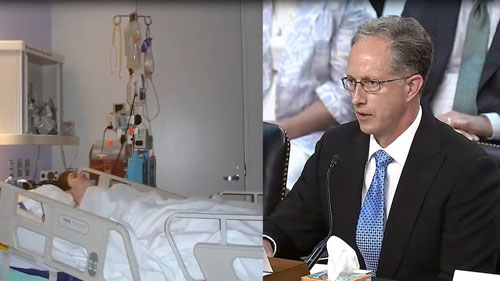 " />
" /> " />
" /> " />
" /> " />
" />




Baptism of Desire vs. The Universal and Constant teaching of Theologians
Recently, an article was published by Fr. Anthony Cekada called Baptism of Desire and Theological Principles. Fr. Cekada is a “traditionalist” priest who rightly rejects Vatican II, yet he holds the heresy common to almost all today: that those who die as non-Catholics can be saved. Fr. Cekada is, therefore, a person who rejects the Catholic dogma that the Catholic faith is necessary for salvation. Not surprisingly, Fr. Cekada is also a fierce advocate of baptism of desire (although, as I just said, Fr. Cekada holds that members of false religions who don’t even desire baptism can be saved). When I asked him via e-mail whether he agreed with the common teaching of heretical, 20th century pre-Vatican II theologians (see the “Heresy before Vatican II Section”) that souls can be saved “outside the Church” by “invincible ignorance,” he conveniently chose not to respond. That is simply because he does believe that those who die in non-Catholic religions can be saved and he rejects the defined dogma which declares that they cannot.
In his article, Baptism of Desire and Theological Principles, Fr. Cekada attempts to prove that Catholics are bound by the “common” teaching of theologians, according to Pope Pius IX in Tuas Libenter. He further argues that baptism of desire was the “common” teaching of theologians before Vatican II. He concludes that Catholics are, therefore, bound to believe in baptism of desire under pain of mortal sin. Since his article has had some influence on traditional Catholics (and the subject matter is relevant to a central point under discussion in this document - i.e. the universal and constant teaching on the necessity of rebirth of water and the Spirit based on John 3:5), I feel it necessary to show how Fr. Cekada has perverted the very principles he applies, has misled his readership, and is contradicted by the authorities he quotes.
TUAS LIBENTER AND THE SO-CALLED “COMMON” CONSENT OF THEOLOGIANS
In his letter to the Archbishop of Munich (Tuas Libenter), upon which Fr. Cekada bases his argument, Pope Pius IX says that Catholic writers are bound by those matters which, though not taught by express decree of the Roman See, are nevertheless taught by the ordinary and universal Magisterium as divinely revealed and held by theologians in universal and constant agreement.
As referenced at the beginning of this document, it was defined as a dogma by the First Vatican Council that the ordinary and universal magisterium is infallible. In his letter to the Archbishop of Munich, Pope Pius IX teaches that Catholic writers are bound by those matters which “are handed down as divinely revealed by the ordinary teaching power of the whole Church spread throughout the world, and therefore, by universal and constant consent are held by Catholic theologians to belong to faith.” Notice, the obligation to the opinion of the theologians only arises from the fact that these matters were already taught as divinely revealed by the ordinary teaching power of the Church and therefore are also held by universal and constant agreement. In his application of this teaching in his article, Fr. Cekada conveniently skips over the “universal and constant” requirement. Fr. Cekada uses the word “common” instead of the properly translated “universal and constant.”
Notice how Fr. Cekada conveniently ignores the requirement stipulated by Pope Pius IX that the theologians must be in “universal and constant agreement”! If he had faithfully applied the “universal and constant” part of it throughout his article, the attentive and sincere reader would easily have picked up the flaw in his feeble argumentation. Is baptism of desire something that has been held by universal and constant agreement? Most certainly not; in fact, it is just the opposite.
As we can see, exactly the opposite of baptism of desire is what is taught in universal and constant agreement! It is the universal and constant teaching of Catholic Fathers and theologians since the beginning that absolutely no one can be saved without water baptism. Thus, the very principle that Fr. Cekada attempts to apply in favor of baptism of desire is used against it.
The fact that baptism of desire was a common and extremely widespread error among 20th century “theologians” means nothing. That's why Pope Pius IX included the words “universal and constant” in Tuas Libenter, which Fr. Cekada conveniently ignores.
The Catholic Encyclopedia states that basically from the time of Augustine (4th century) to Abelard (12th century) it was the common and very widespread teaching of theologians that unbaptized infants suffer the positive sufferings of the damned (i.e. Hellfire) after death, a position that was later rejected by Pope Pius VI. This proves that the “common” error of one period (or even for hundreds of years) is not the universal and constant teaching of the Church from the beginning. This point alone totally blows Fr. Cekada’s thesis away.
Furthermore, the heresy that one can be saved “outside” the Church by “invincible ignorance” was also the common teaching at the beginning of the 20th Century, which demonstrates again that the common teaching (or common error) at any particular time does not replace the universal and constant teaching of all Catholic theologians throughout history on the absolute necessity of water baptism for salvation.
Notice here that the Catechism of Trent is inculcating that the absolute necessity of water baptism for salvation is the unanimous teaching of theologians. But that is the very position which Fr. Cekada’s article – in the name of the “common” consent of theologians – says is a mortal sin to hold! One can easily see from these facts that Fr. Cekada has erred in a major way and is actually completely wrong: the universal and constant teaching of theologians, as Fr. Jurgens and the Catechism of Trent say, is the very position he is condemning! His error arises from his false conclusion that the “common” errors of one time (a time of widespread heresy and modernism and apostasy leading up to Vatican II: the period between approx. 1880 and 1960) constitute the universal and constant teaching of Catholic theologians of all times, which is clearly false. In fact, it is ridiculous. That's why in his discussion of this issue he conveniently dropped the words “universal and constant” from the requirement, which would have made his invalid reasoning all the more easy to detect.
In fact, if the “common” error of theologians at a particular time constituted a teaching of the Church that one is bound to follow, then all Catholics would be bound by the heresy of religious liberty (besides all the others) taught at Vatican II, since this has been accepted by “common” consent of the so-called “Catholic theologians” since Vatican II. Hence, Fr. Cekada offers the following pitiful response to that very objection to his quite obviously false thesis.
Oh, I see, because Fr. Cekada deems that the “theologians” who were “primarily responsible” for Vatican II were “European Modernists” and “enemies of traditional scholastic theology,” he is free to dump his entire thesis that a Catholic is bound to follow the “common” consent of theologians under pain of mortal sin. How convenient! The reader should easily see that by such a statement Fr. Cekada is arguing hypocritically and completely refuting himself. Fr. Cekada must be quite dedicated to his false position to argue in such a contradictory fashion. Furthermore, his claim that because a few of the more radical of the Vatican II theologians were silenced, he is therefore free to reject the common consent of “theologians” after Vatican II, is a hopeless argument; for the fact remains that the “common” consent of purported “Catholic” theologians since Vatican II was to endorse Vatican II’s heretical documents, even if a few of the more radical ones were timidly “silenced” before Vatican II.
Hence, as anyone with eyes to see can see, if one is free to reject the “common” consent of Vatican II theologians because one deems them “enemies of traditional scholastic theology,” then one can just as well dump the fallible, contradictory teaching of the pre-Vatican II theologians on baptism of desire, since it is patently contrary to “traditional dogmatic theology” (viz., the defined dogma on the necessity of rebirth of water and the Spirit), not to mention the universal Tradition of the Church from the beginning on John 3:5.
Furthermore, if a Catholic were bound to follow the “common” teaching of theologians at a particular time, and had lived during the Arian period in the 4th century, then one would have been bound by the Arian heresy (the denial of the Divinity of Jesus Christ), since this was not only the “common” teaching of alleged “Catholic” theologians and bishops at the time, but almost the unanimous teaching.
Fr. Cekada’s argument, in fact, would rule out the possibility of a Great Apostasy. It would render Our Lord’s words in Luke 18:8 (When the Son of Man returns do you think He will find faith on earth?) impossible, since all Catholics would always be bound to follow what the majority of “Catholic” theologians say, no matter how heretical it is. Needless to say, Fr. Cekada’s argument is fallacious, as is obvious to the sincere Catholic with common sense.
We have seen how this claim of Fr. Cekada, in his attempt to apply it to “baptism of desire,” is false, illogical, historically ridiculous and easily refuted. I will quote Pope Pius XII again, who himself contradicts the above assertion.
What's ironic and very important is that the fallible theologians Fr. Cekada references in his article not only disagree among themselves about whether this so-called “baptism of desire” is of the faith or merely close to the faith, but the “theologians” he cites actually prove the position of those who reject the false doctrine of baptism of desire.
THE VERY “THEOLOGIANS” HE BRINGS FORWARD ALSO DISPROVE HIS POSITION
One of the 25 pre-Vatican II theologians that Fr. Cekada references in his article on Baptism of Desire and Theological Principles is the German theologian Dr. Ludwig Ott, whose book Fundamentals of Catholic Dogma is somewhat popular in traditional Catholic circles. Dr. Ott taught some serious errors against the salvation dogma in his book (See the “Heresy Before Vatican II Section”). Despite this, in his quarter-million-word compendium (Fundamentals of Catholic Dogma), Dr. Ott is forced to admit the following based on the overwhelming testimony of Catholic Tradition and defined dogma.
Excuse me, but this de fide (i.e., of the Faith) teaching of the Catholic Church on the absolute necessity of water baptism for all without exception for salvation is precisely why Catholics must reject the false doctrine of “baptism of desire”. Baptism of desire is contrary to the above de fide teaching of the Church: baptism of desire is the idea that baptism of water is not necessary for all men without exception for salvation!
But Fr. Cekada, the illogical heretic, would have us believe that based on the testimony of Ludwig Ott (and others) we are supposed to accept baptism of desire under pain of mortal sin, when Dr. Ludwig Ott himself is affirming that the absolute necessity of water baptism for all without exception is de fide – the very truth which compels one to reject baptism of desire! Thus, Fr. Cekada is simply refuted and condemned by the testimony of the very authorities he brings forward.
The fact that Dr. Ludwig Ott immediately proceeds to contradict the above statement on the absolute necessity of water baptism without exception in his book, and proceeds to teach baptism of desire and blood on the very same page – which ideas he interestingly does not term de fide (of the Faith) but close to the faith – simply demonstrates that the common error of baptism of desire which became almost unanimous among “theologians” such as Ott in the late 19th and early 20th century is simply not in harmony with the universal, constant (and de fide) teaching of the Church on the absolute necessity of water baptism without exception for salvation.
Another example would be the famous book, The Catechism Explained, by Fr. Spirago and Fr. Clarke. Like Dr. Ott’s book, The Catechism Explained taught baptism of desire and that there is salvation “outside” the Church. Despite this fact, these “theologians” (Frs. Spirago and Clarke) were compelled to admit the following truth, which is confessed universally by all purported Catholic theologians.
This shows, again, how the universal teaching of theologians is that baptism of water is absolutely necessary for salvation, and that Our Lord’s words in John 3:5 have no exceptions. The fact that Frs. Spirago and Clarke proceed to contradict this statement and teach baptism of desire (and the heresy of salvation “outside” the Church) just displays their own inconsistency and the inconsistency of all who favor baptism of desire.
How can water baptism be indispensably necessary for salvation (as they just told us) if the simple desire for it is sufficient in its place? That is a direct contradiction. And anyone who says that it is not simply denies the law of non-contradiction. One cannot say that:
And at the same time….
These two statements are contradictory, but this is exactly what people were being taught all over the world in catechisms since the late 1800s. They were being taught the truth (1st proposition), while simultaneously they were taught the opposite of that truth (2nd proposition). This shows that even in the time of growing apostasy, heresy and modernism that was the period from approximately 1850 to 1950, all theologians and catechisms still affirmed the universally taught truth on the absolute necessity of water baptism for salvation, even though they did not remain consistent with it.
Further, the Catechism of St. Peter Canisius (the first major catechism in Church history) affirms the true position on baptism and contradicts 'baptism of desire'. See our video and article on this matter: Post-Trent Catechism By St. Peter Canisius Contradicts “Baptism Of Desire”
THEOLOGIANS ARE ALSO UNANIMOUS THAT ONLY THE WATER BAPTIZED ARE PART OF THE CATHOLIC CHURCH!
Additionally devastating to Fr. Cekada’s article is the fact that even the theologians that he references in favor of baptism of desire affirm that it is of the faith that only the water baptized are part of the Catholic Church, outside of which there is no salvation. I quote Dr. Ludwig Ott again, in his Fundamentals of Catholic Dogma.
Here we see Dr. Ludwig Ott (one of the “theologians” cited by Fr. Cekada to “prove” baptism of desire) affirming the universal Catholic teaching that only water baptized persons are inside the Church. Dr. Ott has no problem admitting this since he believes in salvation “outside” the Church (see “Heresy Before Vatican II Section”).
But there are three very important admissions here by Dr. Ott, each relating, ironically, to the three most famous dogmatic definitions on Outside the Church There is No Salvation.
1) The most expansive definition on Outside the Church There is No Salvation was from Pope Eugene IV at the Council of Florence. In this definition, Pope Eugene IV defined infallibly that it is necessary to be inside the unity of the ecclesiastical body, which means that it is necessary to be incorporated into the ecclesiastical body (ecclesiastici corporis).
Please focus on the necessity of incorporation into the ecclesiastici corporis (the ecclesiastical body). Then notice that in the quotation above from Dr. Ott, he admits that “baptism of desire” and “baptism of blood” do not effect incorporation – that is to say, they do not bring one into the Mystici Corporis (the Mystical Body)!
By this statement, Dr. Ott is admitting that “baptism of desire” and “baptism of blood” are not compatible with Pope Eugene IV’s infallible definition on the absolute necessity of incorporation into the ecclesiastical Body (ecclesiastici corporis) for salvation. Thus, Dr. Ott proves that baptism of desire/blood cannot be true and is actually contrary to dogma.
2) The second infallible definition on Outside the Church There is No Salvation was from Pope Boniface VIII in the Bull Unam Sanctam. In this definition, Pope Boniface VIII defined infallibly that it's necessary for every human creature to be entirely subject to the Roman Pontiff (and therefore to the Catholic Church) for salvation.
I pointed out the fact that without water baptism no one is a subject of the Church or the Roman Pontiff. I quoted the Council of Trent to prove the point.
Now, notice how Dr. Ott admits that “baptism of desire” and “baptism of blood” neither make one a subject nor place one under the jurisdiction of the Church!
By this statement, Dr. Ott is admitting that “baptism of desire” and “baptism of blood” are not compatible with Pope Boniface VIII’s infallible definition on the absolute necessity of subjection to the Church and the Roman Pontiff for salvation! Dr. Ott is showing us that baptism of desire/blood cannot be true (and that it is, in fact, contrary to dogma), and he is even referencing the very decree that I referenced (D. 895 from Trent) to prove the point!
3) The first infallible definition on Outside the Church There is No Salvation was from Pope Innocent III at the Fourth Lateran Council. In this definition, Pope Innocent III defined infallibly that the Catholic Church is a Church of “the faithful” and that outside of this “faithful” no one at all is saved.
I pointed out how Catholic Tradition, Catholic Liturgy and all of the fathers teach that only the water baptized are part of the faithful. Now, notice how in the quotation cited above from Dr. Ott, he admits that “baptism of desire” and “baptism of blood” do not make one part of the faithful! I quote it again:
By this statement, Dr. Ott is admitting that “baptism of desire” and “baptism of blood” are not compatible with Pope Innocent III’s infallible definition on the absolute necessity of belonging to “the faithful” for salvation!
Therefore, in just one paragraph, Dr. Ott makes at least three admissions, based on defined Catholic dogma, which show that baptism of desire and baptism of blood are not compatible with Catholic teaching; and he makes these admissions on points that are central to the three most famous infallible definitions on Outside the Church There is No Salvation!
And this rather crucial series of admissions by Dr. Ott – quite devastating to the theory of baptism of desire – brings me to my next point: the theologians, based on the testimony of Tradition and Catholic teaching, all define the Catholic Church the same way – a union of faith and sacraments.
THEOLOGIANS UNANIMOUSLY DEFINE THE CATHOLIC CHURCH AS A UNION OF SACRAMENTS – THE TESTIMONY OF ST. ROBERT BELLARMINE, ST. FRANCIS DE SALES, THE CATECHISM OF TRENT AND ALL THEOLOGIANS
Saint Robert Bellarmine, Doctor of the Church, has given a famous definition of the Catholic Church. St. Robert Bellarmine’s formula is recognized by many as the most precise scholastic definition of the Church to this day.
Here we see the definition of the Church which is accepted by all theologians: a union of faith and sacraments. According to this definition of the Church, there can be no baptism of desire because those who have not received any of the sacraments (the unbaptized, including unbaptized catechumens) don’t share in the unity of the sacraments and therefore are not part of the Catholic Church. Could anything be more simple and clear?
But it is a fact, which may surprise some, that St. Robert Bellarmine did not remain consistent with his definition of the Church above. He actually adopted the false idea of baptism of desire, which became somewhat widespread among theologians in the late middle ages, as I discussed in the section on the history of baptism of desire. But in adopting the false idea of baptism of desire, St. Robert simply failed to remain consistent with his own definition of the Church above, as well as the unanimous definition of theologians on the Church.
But this was not the only issue on which St. Robert did not remain entirely consistent; he failed to remain consistent in his struggle with the true teaching on Limbo, as The Catholic Encyclopedia points out.
Here we see again that the fathers, doctors and saints, including Robert Bellarmine, actually contradicted themselves on Limbo, even what some of them held to be de fide. This again shows us why Catholics don’t form definite doctrinal conclusions from the teaching of saints, including St. Robert Bellarmine. Catholics form definite doctrinal conclusions from Catholic dogma, and the teaching of saints only when it is in line with dogma. And St. Robert Bellarmine’s definition of the Church above, which excludes all unbaptized persons from the Catholic Church, is consistent with dogma; his statements on baptism of desire are not.
Here we see that Pope Boniface VIII defined as a dogma that the Church is a union of sacraments. The Catholic Church is infallibly defined as a union of sacraments also by Pope Eugene IV.
The obvious meaning and sense of this dogmatic text is that the Catholic Church is an ecclesiastical Body and a union of sacraments, a union “so strong.” This is the truth confessed by all theologians. St. Francis De Sales teaches the exact same truth.
Here we see that St. Francis De Sales repeats the same truth and defines the Church the same way. This is how everybody defines the Church! The Catechism of the Council of Trent affirms the same teaching:
Is any teaching more consistent? The Catechism of Trent concludes:
So again, we see how baptism of desire advocates, such as Fr. Cekada, are completely wrong and actually pervert the truth when they assert that the teaching of theologians binds one to “baptism of desire.” It is exactly the opposite. The unanimous teaching of theologians contradicts the false doctrine of baptism of desire, by defining the Church as only those who have received the sacraments, which definition is also a dogma (Eugene IV; Boniface VIII, de fide). Catholics are not bound, and in fact must reject, the fallible statements and speculations of men, however great, such as St. Robert Bellarmine, when they are not in harmony with Catholic dogma, not to mention when they contradict the very principles they elsewhere affirm.
And this is precisely why St. Robert Bellarmine was at a complete loss to cogently explain the idea of “baptism of desire” when he had already defined the Catholic Church as a body excluding all the unbaptized. He failed miserably in attempting to explain how catechumens can be saved when only baptized persons are part of the Catholic Church.
Notice the difficulty St. Robert encounters in trying to explain baptism of desire; he immediately has to compromise and contradict his own definition of the Church.
First, St. Robert’s “difficulty” in attempting to explain his (fallible) position that catechumens can be saved, when catechumens are excluded from the Church by his own definition, is simply because the idea that an unbaptized person can be part of the Church is found nowhere in any council or statement from the Papal Magisterium. The Catholic Church has exclusively held and taught that only those who have received the Sacrament of Baptism are part of the Church and no dogmatic decree has ever taught anything else.
This is why St. Robert is constrained to admit that catechumens are not actually inside the Church, but he argues that they can be saved by being in it in resolution, but not in fact. (Note: St. Robert was only applying this idea to catechumens, not pagans, heretics and schismatics, as our Modernists today love to assert). But contrary to St. Robert’s fallible and false assertion that catechumens can be saved by being in the Church “not in actual fact, yet at least in resolution,” it is defined that one must be in actual fact part of the Church. It is defined that one must be “in the bosom and unity” (Eugene IV); that one must be incorporated into the “ecclesiastical body” (Eugene IV); that one must be “entirely subject to the Roman Pontiff” (Boniface VIII); that one must be in the union of “sacraments” and “the faithful” (Eugene VI; Boniface VIII; Innocent III). These elements only come with water baptism, as attested to by St. Robert’s own definition of the Church. However, in trying to explain the inexplicable (i.e. how baptism of desire is compatible with Catholic dogma), and in trying to defend the indefensible (i.e. how unbaptized catechumens can be in a Church which is defined by a union of sacraments), St. Robert contradicted these principles and made a mistake.
Second, in attempting to substantiate his erroneous belief in baptism of desire, St. Robert says that catechumens are “faithful.” This is contrary to the fathers and the teaching of Traditional Catholic Liturgy since apostolic times, which excluded catechumens from “the faithful” (as discussed in the Section on “The One Church of the Faithful”). It is also contrary to the ready admissions of baptism of desire advocates such as Ludwig Ott, which I’ve already quoted.
By now the reader should again be discovering the theme which I’ve been showing throughout this extensive examination of the history of the baptism of desire issue: that baptism of desire is a fallible, erroneous tradition of man, which has never been taught by the Papal Magisterium. It gained momentum based on the fallible and flawed passages of some nevertheless great men, who contradicted themselves and violated their own principles in trying to explain it, while almost always making other errors in the same documents.
In fact, St. Robert’s statement that catechumens are “faithful” also contradicts the Catechism of the Council of Trent.
This means that those who haven’t received the sacraments are not part of the “faithful,” again contrary to what Bellarmine asserted in his admittedly “difficult” attempt to reconcile the false idea of baptism of desire with his own definition of the Catholic Church, which excluded all the unbaptized. When saints enter into “difficult” attempts to explain speculative things that are not clearly taught by the Church they are bound to make mistakes. Thus, Catholics must not follow St. Robert in this “difficult” (or rather, impossible) attempt to explain baptism of desire, but rather they should follow St. Gregory the Theologian (Doctor of the Church), who stated regarding the idea that one can reckon as baptized him who desired baptism but did not receive it, “I cannot see it.”[31]
St. Robert indeed erred on the subject of baptism of desire; but what is most important to remember, as stated already, is this: while the principle of Papal infallibility was always believed in the Church (expressed from the earliest times by such phrases as in the apostolic see the Catholic religion has always been preserved untainted and holy doctrine celebrated), there is no doubt that after the definition of Papal infallibility at the First Vatican Council in 1870 there is much more clarity about which documents are infallible and which are not. St. Robert Bellarmine and others who lived before 1870 did not necessarily have this degree of clarity. That caused them to lessen the distinction, in certain cases, between the infallible decrees of popes and the fallible teaching of theologians. It also caused them to not look quite as literally at what the dogma actually declares, but rather at what they thought the dogma meant in light of the opinion of popular theologians of the time.
Catholics who live today can say that they understand more about Papal Infallibility than the theologians and doctors in the Middle Ages all the way down to 1870, and that they possess an advantage in evaluating this issue not only because they live after the definition of Papal Infallibility, but also because they can review the entire history of papal pronouncements of the Church on this issue and see the harmony among them on the absolute necessity of water baptism.
UNIVERSAL TRADITION ON BAPTISM AFFIRMED EVEN BY HERETICAL MODERN CATECHISMS
To further illustrate the point that the absolute necessity of water baptism for salvation is the universal and constant teaching of all theologians even during the time of the apostasy and even by those same persons who proceeded to deny this truth, let’s take, for example, a recent edition of the Baltimore Catechism and the Catechism attributed to Pope St. Pius X.
Notice how this edition of the Baltimore Catechism, which taught the error of baptism of desire to many (as we will see), reiterates the universal and constant teaching of the Catholic Church (based on the words of Jesus Christ in John 3:5) that Baptism of water is necessary for the salvation of all men. The Baltimore Catechism, therefore, teaches the exact same truth of faith that has been a constant echo in Catholic Tradition since the beginning.
So, contrary to popular belief, those who reject “baptism of desire” actually follow the teaching of the Baltimore Catechism on the absolute necessity of water baptism. They don’t, however, follow the teaching of the fallible Baltimore Catechism when it proceeds to contradict this truth on the absolute necessity of water baptism for salvation and teach baptism of desire.
This statement blatantly contradicts the truth taught in Q. 320, that baptism of water is absolutely necessary for all men to be saved. In the Baltimore Catechism the people have been taught two directly contradictory notions one after the other:
and…
Can both be true at the same time? No, they cannot. As a Catholic, one must follow the first statement, which is in accord with defined dogma and the universal Tradition since the beginning of the Church and is based on the declaration of Christ Himself.
Furthermore, the edition of the Baltimore Catechism from which I’m quoting also makes the same devastating admissions which Dr. Ott was compelled to make in his discussion of what the so-called “baptism of desire” is not.
Here we see this edition of the Baltimore Catechism teaching that: 1) Baptism of desire doesn’t make one a member of the Church; 2) Baptism of desire does make one a member of the Church in desire; 3) there is salvation outside the Church by baptism of desire and blood.
The first two statements contradict each other, while the third is direct heresy against the dogma that Outside the Church no one at all is saved (Pope Innocent III, de fide). Thus, this edition of the Baltimore Catechism’s explanation of “baptism of desire” is not only fallible, but directly heretical.
But having taught that baptism of desire “saves” people “outside” the Church, this version of the Baltimore Catechism proves the point again that baptism of desire is incompatible with defined dogma – not to mention its own teaching on the absolute necessity of water baptism for salvation.
THE CATECHISM ATTRIBUTED TO ST. PIUS X
The Catechism attributed to Pope St. Pius X repeats for us the same de fide teaching of the Catholic Church on the absolute necessity of water baptism for salvation.
So, contrary to popular belief, those who reject “baptism of desire” actually follow the teaching of the Catechism attributed to Pope St. Pius X on the absolute necessity of water baptism. They don’t follow, however, the teaching of this fallible Catechism when it proceeds to contradict this truth on the absolute necessity of water baptism for salvation.
This again is a total contradiction to what is stated in Question 16. It should be noted that this catechism (which is sometimes called the Catechism of Pius X) is actually called the Catechismo Della Dottrina Cristiana (1912). It is one that liberals and modernists love to cite. It was not infallible or universally binding. A pope is only infallible when speaking magisterially. This catechism was only approved for use in Italy, and it actually contains a serious error. Popes are not infallible or flawless when approving general works in a non-infallible or non-universal capacity. For instance, numerous popes gave a general approbation to St. Thomas’ Summa Theologiae. That does not mean that the Church endorsed St. Thomas’ error in the Summa Theologiae on the Immaculate Conception.
Further, this catechism is proven not to be infallible by the fact that it teaches the blatant error that there is salvation “outside” the Church (as I will show)! Certain statements in this catechism are, sadly, an example of the heresy that was percolating before Vatican II. I will first quote where the catechism affirms the dogma.
Here the Catechism attributed to Pope St. Pius X reaffirms the defined dogma. But it proceeds to deny this dogma just two questions later!
Here we see this fallible Catechism directly contradicting the dogma Outside the Church There is No Salvation! It teaches that there can be salvation “outside” the Church, which contradicts the truth it taught to the people in Question 27. This statement is so obviously wrong, in fact, that it contradicts the position of even many crafty heretics of our day, who know that they cannot say that people are saved “outside,” so they argue that non-Catholics are not “outside” but are “inside” somehow.
Further, notice that the catechism attributed to St. Pius X teaches the heresy that persons can be united to the “Soul” of the Church, but not the Body. As proven already, the Catholic Church is a Mystical Body. Those who are not part of the Body are no part at all.
This discussion on the catechisms should demonstrate to the reader how the rampant denial of Outside the Church There is No Salvation and the necessity of Water Baptism has been perpetuated through fallible texts with imprimaturs and why it has been imbibed today by almost all who profess to be Catholic. It has been perpetuated by fallible documents and texts which contradict themselves, which contradict defined dogma, and which teach heresy, and which – all the while – elsewhere affirm the immutable truths of the absolute necessity of the Catholic Church and water baptism for salvation. And this is why Catholics are bound to adhere to infallibly defined dogma, not fallible catechisms or theologians.
[1] Denzinger 1683.
[2] Jurgens, The Faith of the Early Fathers, Vol. 3, pp. 14-15 footnote 31.
[3] The Catholic Encyclopedia, Volume 9, “Limbo,” 1910, p. 257.
[4] The Catechism of the Council of Trent, p. 171.
[5] Archbishop Patrick Kenrick, Treatise on Baptism, Baltimore: Hedian and O’Brien, 1852, pp. 84-85; quoted by Michael Malone, The Only-Begotten, p. 394.
[6] Jurgens, The Faith of the Early Fathers, Vol. 2, p. 39.
[7] Jurgens, The Faith of the Early Fathers, Vol. 2, p. 3.
[8] The Papal Encyclicals, Vol. 4 (1939-1958), pp. 178-179.
[9] Dr. Ludwig Ott, Fundamentals of Catholic Dogma, p. 354.
[10] Fr. Francis Spirago and Fr. Richard Clarke, The Catechism Explained, Rockford: IL, Tan Books, p. 579.
[11] Fr. Francis Spirago and Fr. Richard Clarke, The Catechism Explained, p. 579.
[12] Dr. Ludwig Ott, Fundamentals of Catholic Dogma, p. 309.
[13] Denzinger 714; Decrees of the Ecumenical Councils, Vol. 1, p. 578.
[14] Dr. Ludwig Ott, Fundamentals of Catholic Dogma, p. 309.
[15] Denzinger 468-469.
[16] Denzinger 895; Decrees of the Ecumenical Councils, Vol. 2, p. 704.
[17] Dr. Ludwig Ott, Fundamentals of Catholic Dogma, p. 309.
[18] Decrees of the Ecumenical Councils, Vol. 1, p. 230; Denzinger 430.
[19] Dr. Ludwig Ott, Fundamentals of Catholic Dogma, p. 309.
[20] De Ecclesia Militante, Book III, Ch. 2, opera omnia, Naples 1872, p. 75; partially quoted by Fr. Laisney, Is Feeneyism Catholic?, p. 76.
[21] The Catholic Encyclopedia, Volume 9, “Limbo,” 1910, p. 258.
[22] Denzinger 468.
[23] Denzinger 714; Decrees of the Ecumenical Councils, Vol. 1, p. 578.
[24] St. Francis De Sales, The Catholic Controversy, p. 161.
[25] The Catechism of the Council of Trent, pp. 99-100.
[26] The Catechism of the Council of Trent, p. 159.
[27] De Ecclesia Militante, Book III, Ch. 3, opera omnia, Naples 1872, p. 75; quoted by Fr. Laisney, Is Feeneyism Catholic?, p. 76.
[28] De Ecclesia Militante, Book III, Ch. 2, opera omnia, Naples 1872, p. 75; partially quoted by Fr. Laisney, Is Feeneyism Catholic?, p. 76.
[29] Dr. Ludwig Ott, Fundamentals of Catholic Dogma, p. 309.
[30] The Catechism of the Council of Trent, p. 110
[31] Jurgens, The Faith of the Early Fathers, Vol. 2: 1012.
[32] The New St. Joseph Baltimore Catechism, No. 2, New York: Catholic Book Publishing Co., 1962-1969, p. 153.
[33] Jurgens, The Faith of the Early Fathers, Vol. 1: 92.
[34] Jurgens, The Faith of the Early Fathers, Vol. 1: 126.
[35] The New St. Joseph Baltimore Catechism, No. 2, 1962-1969, p. 153.
[36] The New St. Joseph Baltimore Catechism, No. 2, p. 153.
[37] Decrees of the Ecumenical Councils, Vol. 1, p. 230; Denzinger 430.
[38] The Catechism of Pope St. Pius X, Angelus Press, 1993, p. 71.
[39] The Catechism of Pope St. Pius X, Angelus Press, 1993, p. 71.
[40] The Catechism of Pope St. Pius X, Angelus Press, 1993, p. 31.
[41] The Catechism of Pope St. Pius X, Angelus Press, 1993, pp. 31-32.
[42] The Papal Encyclicals, Vol. 3 (1903-1939), p. 317.
[43] Denzinger 1647.
[44] Denzinger 861; Decrees of the Ecumenical Councils, Vol. 2, p. 685.
Sign up for our free e-mail list to see future vaticancatholic.com videos and articles.
Recent Content
^